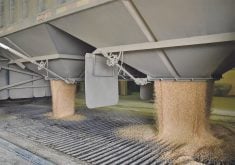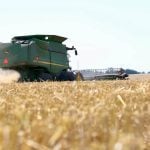The average return on feedlot cattle between 1980 and 1999 was 45 cents
US per head.
Cow-calf producers didn’t fare any better. Over the last 25 years, they
have lost an average of $8.41 per cow each year.
Feedlot operators need to focus on cost control while cow-calf
producers need to concentrate on obtaining the best price possible for
calves. Preconditioning programs for calves could meet the needs of
both sectors.
Though market prices have the greatest impact on profitability, disease
Read Also

Crop profitability looks grim in new outlook
With grain prices depressed, returns per acre are looking dismal on all the major crops with some significantly worse than others.
costs are a close second. Sick cattle have higher production costs and
poorer feedlot performance than healthy cattle, a difference as high as
$150 per head.
For example, bovine respiratory disease, or BRD, is responsible for
approximately 75 percent of calf illnesses. It can strike up to 70
percent of cattle, but most feedlots report death rates of 15 to 45
percent. Death rates and treatment costs from BRD account for about
eight percent of total production costs.
The true cost of BRD is much higher because infected cattle, even those
with subclinical disease, will have reduced performance.
In one trial, 35 percent of steers were treated for BRD, yet 72
percent had lung lesions at slaughter. Steers without lung
lesions returned on average $30 more per head.
Calf buyers should try to identify calves that are less likely to
succumb to BRD. One way to assess this is to determine whether the calf
consumed colostrum. Calves that don’t get adequate colostrum are three
times more likely to develop BRD.
Collecting this information is difficult unless cow-calf producers
monitor every calf in their herds. A simpler way to improve a calf’s
immunity is through pre-weaning vaccinations against BRD. Besides lower
medical costs, vaccinated calves have a higher average daily gain and
lower cost of gain.
These vaccines should be given at least two weeks before weaning to be
effective. Vaccinations given at weaning do not appear to have the same
positive effects.
Approximately 25 percent of cow-calf operations vaccinate their calves
before weaning. About half use modified live vaccines, which provide
good immunity with just one dose.
The other 50 percent use killed vaccines. Unfortunately, more than two
thirds of these producers fail to boost the killed vaccines properly,
negating their effectiveness.
Buyers for feedlots can only assume that one in six calves are properly
vaccinated for BRD. Providing a buyer with detailed vaccination
information could mean a premium price for a cow-calf producer because
he is no longer selling “average” cattle.
Preconditioning is a step above a pre-weaning vaccination program.
Calves must be weaned at least three weeks before sale so they can be
trained to eat from feed bunks. The calves are also dewormed,
vaccinated, dehorned, and castrated.
Despite the obvious benefits, preconditioning programs have not been
widely adopted. Less than two percent of calves entering American
feedlots are preconditioned.
Cow-calf producers, faced with lower calf prices, are reluctant to
endure the added costs of preconditioning.
Early studies did not consistently demonstrate added calf health and
performance benefits to feedlot buyers so they have been reluctant to
pay premiums on preconditioned cattle.
More current research suggests that preconditioning is beneficial.
Costs for raising preconditioned calves are 12 percent lower than those
for feeding out calves of unknown origin.
Preconditioned cattle also have a better carcass. These recent findings
may spark renewed interest in preconditioning programs.
Jeff Grognet is a veterinarian and writer practicing in Qualicum Beach,
B.C.














